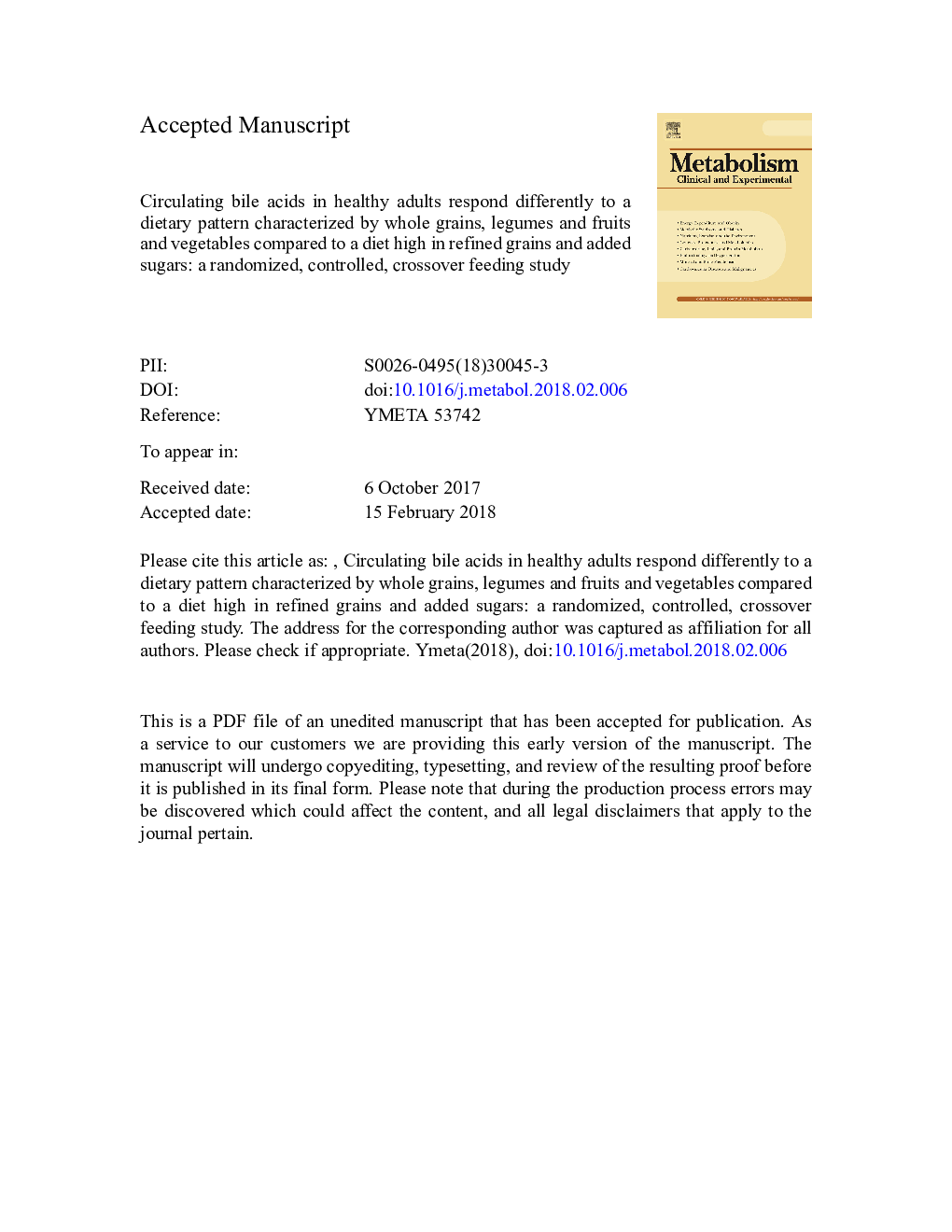| Article ID | Journal | Published Year | Pages | File Type |
|---|---|---|---|---|
| 8632986 | Metabolism | 2018 | 26 Pages |
Abstract
Diets with comparable macronutrient and energy composition, but differing in carbohydrate source, affected fasting plasma bile acids differently. Specifically, a diet characterized by whole grains, legumes, and fruits and vegetables compared to a diet high in refined grains and added sugars led to modest increases in concentrations of TLCA, TCA and GCA, ligands for FXR and TGR5, which may have beneficial effects on glucose homeostasis.
Keywords
LC-MSGLP1UDCAFXRDCACDCADXAGlcAGCAHOMA-IRMRMHCATCATCDCATLCAGCDCATDCACARBFDRG protein-coupled bile acid receptor 1GDCARefined grainfarnesoid X receptorAsbtHomeostasis model assessment-insulin resistanceLCAChenodeoxycholic acidDeoxycholic acidTaurodeoxycholic acidtaurochenodeoxycholic acidTaurolithocholic acidTaurocholic acidBile acidLithocholic acidhyocholic acidCholic acidGlycodeoxycholic acidGlycochenodeoxycholic acidglycolithocholic acidglycocholic acidDietary patternsUrsodeoxycholic acidapical sodium-dependent bile acid transporterdual-energy X-ray absorptiometryWhole grainsbody mass indexBMICoefficient of VariationFeeding studyInsulin resistancefalse discovery rateC-reactive proteinCRPliquid chromatography tandem mass spectrometryWhole grain
Related Topics
Life Sciences
Biochemistry, Genetics and Molecular Biology
Endocrinology
Authors
Bigina N.R. Ginos, Sandi L. Navarro, Yvonne Schwarz, Haiwei Gu, Dongfang Wang, Timothy W. Randolph, Ali Shojaie, Meredith A.J. Hullar, Paul D. Lampe, Mario Kratz, Marian L. Neuhouser, Daniel Raftery, Johanna W. Lampe,
